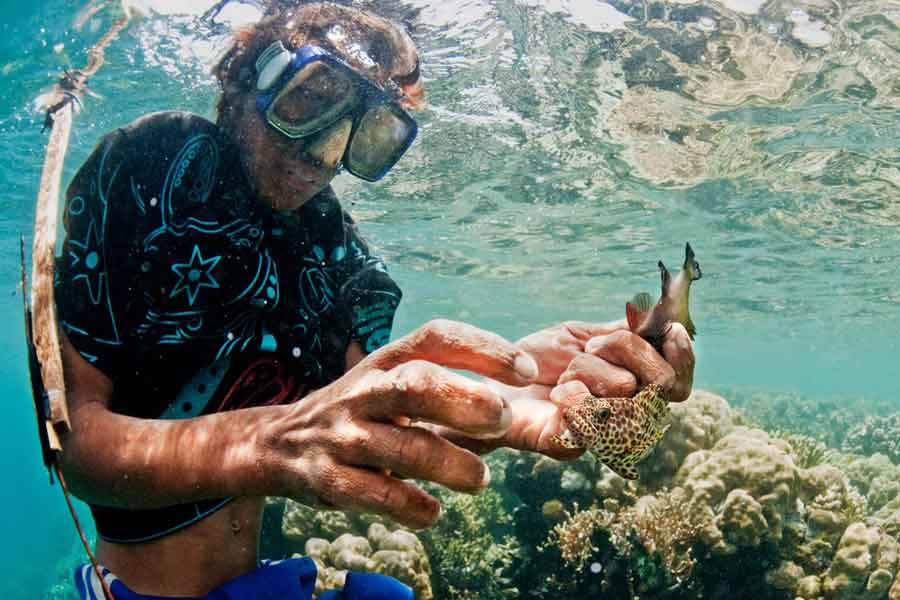
Together, the Indonesian and Filipino archipelagos consist of around 21,000 islands and nearly one-fifth of the Earth’s coral reefs. It is a vast treasure trove within reach of a large coastal population lacking resources, undoubtedly a bad combination.
A significant part of this population relies on the trade of live fish, which are captured and sold to aquarium enthusiasts worldwide who are willing to pay fortunes to incorporate exotic fish into their collections. However, the majority of these specimens are transported alive to places like Hong Kong, where diners and fashion lovers can choose their fish directly from the restaurant’s tank, paying hundreds of dollars for the privilege.
For years, fish were captured using nets, but the high market demand has led local divers to employ a much more damaging method: cyanide fishing. When divers spot a group of fish, they simply startle them, causing the fish to seek refuge among the coral, hiding in its crevices. Then, they surround one side of the coral with a net while simultaneously spraying the coral formation with a plastic bottle filled with cyanide. Next, using levers, they separate the coral and take the poisoned, lethargic fish. Half of the fish die during capture or transport. The number of fish caught through this artisanal fishing method may not be significant for the islands’ balance, but what is truly alarming is that the coral head, sprayed with cyanide, will inevitably die. It turns a characteristic white color, signifying dead coral, and will no longer support marine life.
In the Philippines alone, it is estimated that there are over 3,000 fishermen using cyanide. Each of them kills approximately 50 coral heads per day. The total number of coral heads annihilated in a year amounts to 34 million. Considering that this technique was introduced in the 1950s, the number of coral heads extinguished since then approaches one billion. The Filipinos are not only depleting the resource that sustains them but also receiving meager sums for risking their lives and ruining their coasts. For a small scorpionfish that can fetch a minimum price of $50 in the market, they are paid ten pesos, equivalent to just half a dollar.
Fortunately, the International Marine Life Alliance is working with fishing groups to teach them how to capture live fish using small nets and to stop using cyanide. In essence, they are educating native fishermen on how to sustainably live off the resource without depleting it. The responsibility for this massacre should not be sought among the impoverished coastal population of the Philippines but rather among the distinguished and educated clientele of restaurants in the East and collectors of species worldwide.
«You cannot defend what you do not love, and you cannot love what you do not know.»

